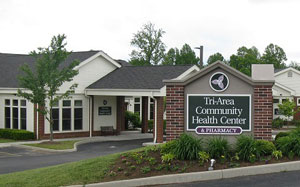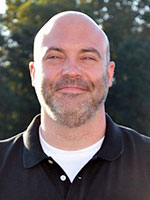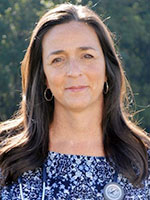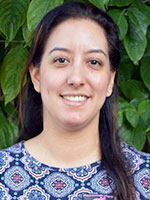May 19, 2021
Tri-Area Community Health Provides Community-Focused Integrated Care
by Kathryn Rutz
 Laurel Fork is a small rural community in
southwestern Virginia, nestled on the edge of Appalachia.
Residents are spread out over the rolling terrain, many
in remote or isolated places, which makes providing
healthcare services a unique challenge. To better serve
the needs of the area, Tri-Area Community
Health (TACH) was established as a Federally
Qualified Health Center, which means they do not turn
anyone away because of an inability to pay. They continue
to grow along with the community they serve, evaluating
the needs of their patients and adapting as needed,
including adding services for their growing Hispanic
population. The diverse needs of the community they serve
led to TACH designing a community-focused approach to
integrated care, which takes into account the
characteristics and unique behavioral health needs of the
community.
Laurel Fork is a small rural community in
southwestern Virginia, nestled on the edge of Appalachia.
Residents are spread out over the rolling terrain, many
in remote or isolated places, which makes providing
healthcare services a unique challenge. To better serve
the needs of the area, Tri-Area Community
Health (TACH) was established as a Federally
Qualified Health Center, which means they do not turn
anyone away because of an inability to pay. They continue
to grow along with the community they serve, evaluating
the needs of their patients and adapting as needed,
including adding services for their growing Hispanic
population. The diverse needs of the community they serve
led to TACH designing a community-focused approach to
integrated care, which takes into account the
characteristics and unique behavioral health needs of the
community.
A lot of existing models of integrated care are four sessions or less, 30-minute appointments, and then if that doesn't meet the patient's need, you refer out. But that just doesn't fit in rural communities.
Integrating primary care and behavioral health can be a challenge — especially in rural areas, where availability of both is often already an issue. Dr. Josh Bradley, TACH's Behavioral Health Director and an experienced Licensed Clinical Psychologist, spoke about the issues he faced with the typical approach to integrated methods: “A lot of existing models of integrated care are four sessions or less, 30-minute appointments, and then if that doesn't meet the patient's need, you refer out. But that just doesn't fit in rural communities.”

Often times when providers refer their patients for services outside of the original clinic, the providers have little chance to follow up with their patients' care. The patients themselves, Bradley noted, also are less likely to make those next steps. “Usually, if we refer out to those places, they're not going to show up…I think that's pretty typical — referring out [to] that extra staff, a new place to go — it decreases the chances of someone continuing with care.” With this in mind, TACH began focusing on ways to provide behavioral health services within their own community and increase communication between their medical and behavioral health staff.
Community-Focused Care Connects Practitioners with Patients and One Another

Donna Gibson has worked as a Family Nurse Practitioner at TACH for almost seven years. In that time, she has developed a rapport with her patients, getting a feel for their personalities, daily lives, and healthcare needs. She also refers quite a few of them for behavioral health services. For many of the patients who've lived in rural Appalachia their whole lives, this is their first experience with behavioral healthcare — and they often experience some apprehension. This is where the community-focused model of integrated care helps bridge the gap: “Just being able to see these patients while they're here and then on that same visit get them in with somebody that's in behavioral health…takes away that anxiety,” Gibson explained. “If I see a patient and I'm talking to them about depression or weight loss or quitting smoking, and they can actually meet Dr. Bradley or one of our students and see that they're not scary people and that they're willing to work with them…It's so much more likely that they'll come back and that we'll actually get them in care and be successful.”
Aside from creating a better environment for a patient to receive care, TACH's community-focused approach also helps close the loop between providers. Staff can communicate with one another directly, addressing concerns about a particular patient or coordinating health plans.
I talk with Dr. Bradley probably every day about one of our patients in common, which I think outside of a practice like this would never happen.
“I talk with Dr. Bradley probably every day about one of our patients in common, which I think outside of a practice like this would never happen,” Gibson said. “If I have a problem with a patient that doesn't want behavioral health [care] right now, [Dr. Bradley] can give me recommendations on how to do a better job getting them where they want to be. It's just really a big deal, I think, to have us all here together and working to help with the same patient.”
Another benefit to having multiple providers working in the same space became evident when Tri-Area Community Health hired Cindy Hernandez, a Licensed Clinical Social Worker, who is also fluent in Spanish. The clinic uses translation software, but although this allows for communication, providers still struggle with how to put their recommendations in a relatable context for the patients.
“There are a lot of barriers when working with this Hispanic population, especially from a cultural standpoint,” Hernandez noted, “and so being of a Hispanic background myself, I can provide some of those services and kind of bridge that gap.” By bringing in familiar language and phrasing a care plan in a culturally conscious way, Hernandez makes it more likely that these patients will continue care.
“[Hispanic patients] are quite often hesitant, so [the provider's] ability to make an easier transition for [the patients] and how they speak about behavioral health makes a huge difference – I've seen over the years how much of a difference that can make,” Hernandez explained.
Growing Services and Growing Your Own
Bradley described the changes the clinic has undergone since it started: “We've grown a lot over the past six years. When I started it was just me and now we have four psychologists, three LCSWs, a psychiatric mental health nurse practitioner, a part-time psychiatrist, and a behavioral health case manager. And then there are three general case managers that are within our umbrella. They work with medical and behavioral health patients. And we have students as well: doctoral students, three from Radford University each year.”
In order to meet the workforce needs of the program, the clinic partnered with Radford University's Doctor of Psychology program with the goal of training and retaining practitioners in rural areas. Students can complete a practicum training rotation at TACH, which allows the organization to offer free behavioral health visits with the doctoral students under the supervision of Bradley and his colleagues. The program has been successful in serving the student's educational needs as well as the needs of the community. Sometimes, students choose to stay in the community, such as two of the psychologists on staff, who first came to TACH as students.
Having a variety of providers with different areas of expertise allows the rural clinic to have access to a variety of therapies and specialties that other clinics might not be able to offer. Take, for example, Hernandez, who specializes in Eye Movement and Desensitization and Reprocessing (EMDR) therapy. Hernandez explained the process: When someone has one or more traumatic experiences, it can create negative images, thoughts, emotions, and body sensations, which can be triggered long after the trauma is over. EMDR helps to desensitize past trauma through three modalities: eye movement, tapping, and sound. As the patients focus on a different sensory and cognitive experience while processing the traumatic event or events, it can lessen the feelings of anxiety or depression and reduce somatic experiences like heart rate and tension. Things in the present become less triggering.

Hernandez says that she's found EMDR to be helpful to her patients in telehealth settings as well as in person: “I've been trained to administer bilateral movements through the computer. That allows our patients to feel an increased sense of safety at home while treating their trauma, and that's especially important in rural communities or with our immigrant population where perhaps transportation is more difficult, despite having such services offered through TACH's transportation van. I've been very grateful to be able to offer these services, and it's been very, very rewarding.”
Facing Challenges and Making Change
With robust communication between primary care and behavioral health staff, Tri-Area Community Health has been able to treat their patients in a more holistic manner directly in their own community. Tri-Area Community Health's CEO, Dr. James Werth, who is a Licensed Clinical Psychologist, noted that physical and mental conditions are often linked: “For 2020, we saw about 9,400 people…2,700 had a diagnosis of hypertension, 1,600 had a diagnosis of anxiety, and almost 1,300 had a diagnosis of depression. Those were our top three diagnoses. Overweight/obesity was in there too. Obviously, depression and anxiety are behavioral health conditions, but hypertension, diabetes, overweight/obesity — all those have behavioral health components to them.”
Gibson, the Family Nurse Practitioner, gave an example, emphasizing that it can be hard to treat one condition without addressing a co-occurring condition. “For instance, if I have a diabetic patient that's dealing with depression and anxiety, a lot of times until I get that depression or anxiety diagnosis under control, we're not going to be able to get their diabetes under control because they're not interested in their health.”
This is where community-focused care makes all the difference. Werth explained why the approach has been more effective than traditional integrated care referrals: “The difference is that that patient here can choose not just to see Donna, but then go right next door or have Josh or Cindy come into the exam room and talk with the person right there in that same day. [They] make the connection, maybe receive some coping skills…And so the patients are no different in our clinic versus anywhere, any other rural area. But the difference is the more comprehensive services that we can provide, and hopefully that has a positive impact on their wellness overall, their well-being, and potentially their relationships with other people.”
Despite the challenges and scarcity of resources, Tri-Area Community Health's integrated care model has worked well for its community, limiting the need for outside referrals and instead allowing for a warm hand-off between medical and behavioral health providers. With their care already linked, fewer patients fall through the cracks, and concerns are addressed more quickly. Providers are able to coordinate with one another to provide better and more complete care.
Bradley summed up the community-focused model: “[We're] meeting needs that were already existing in these rural communities that weren't being met — rather than just trying to do some brief work and send them out the door.”
